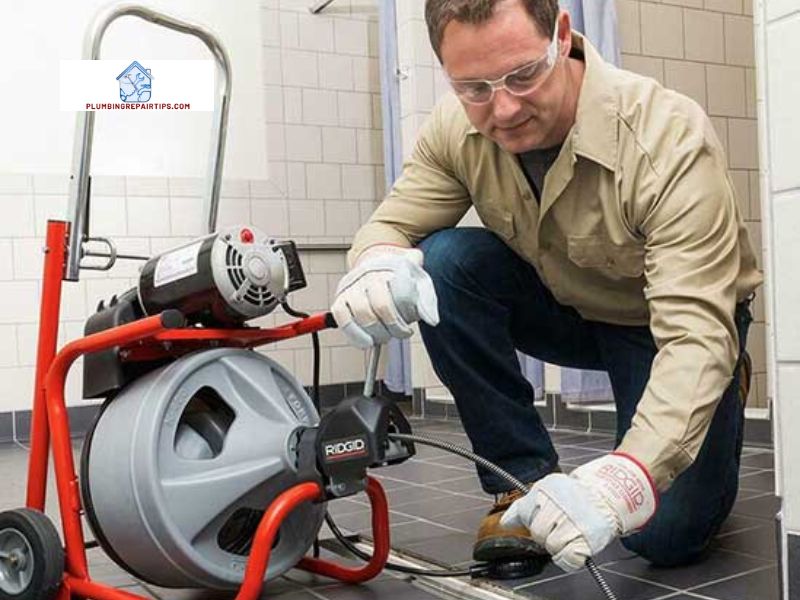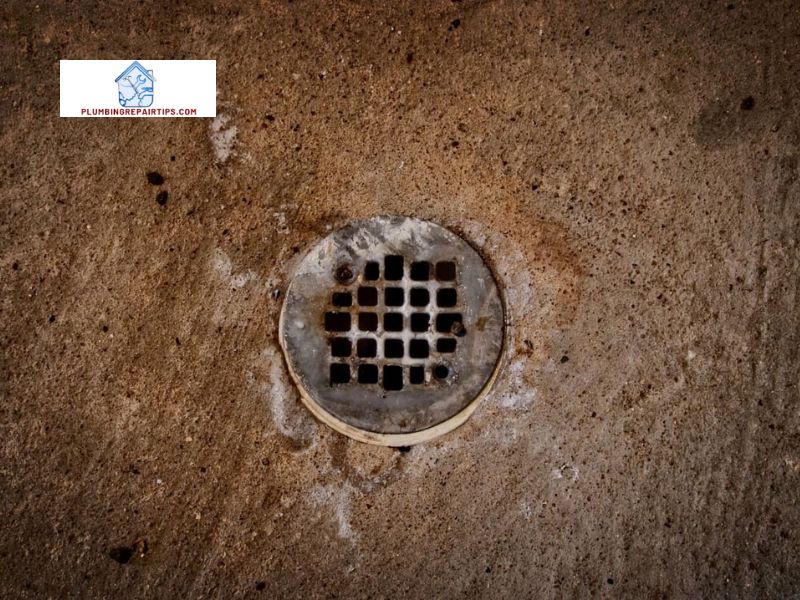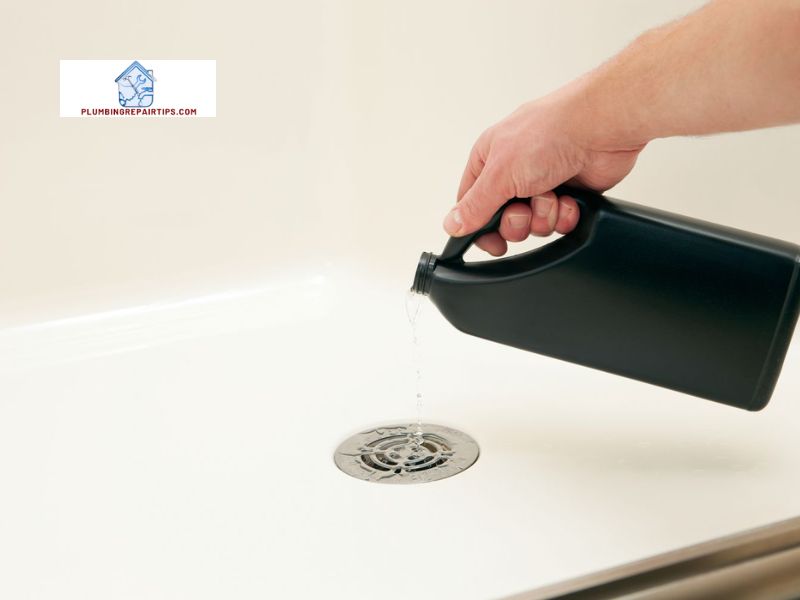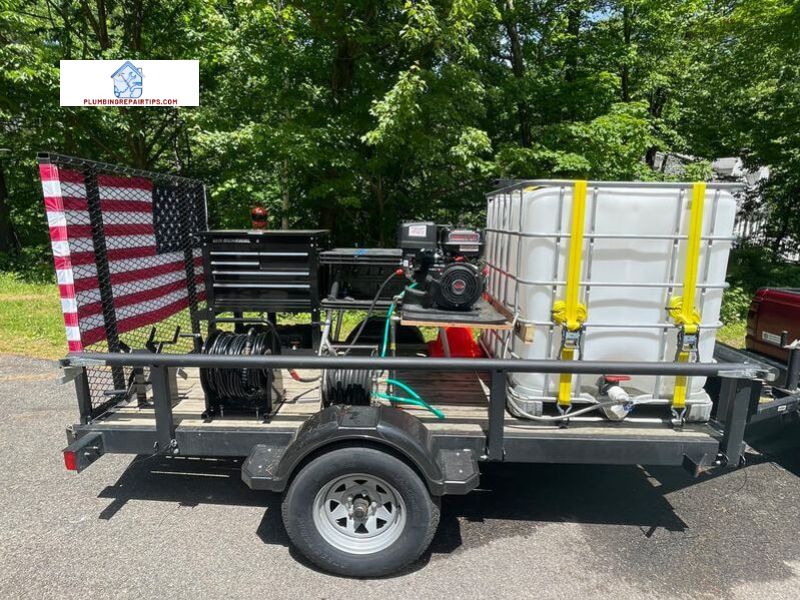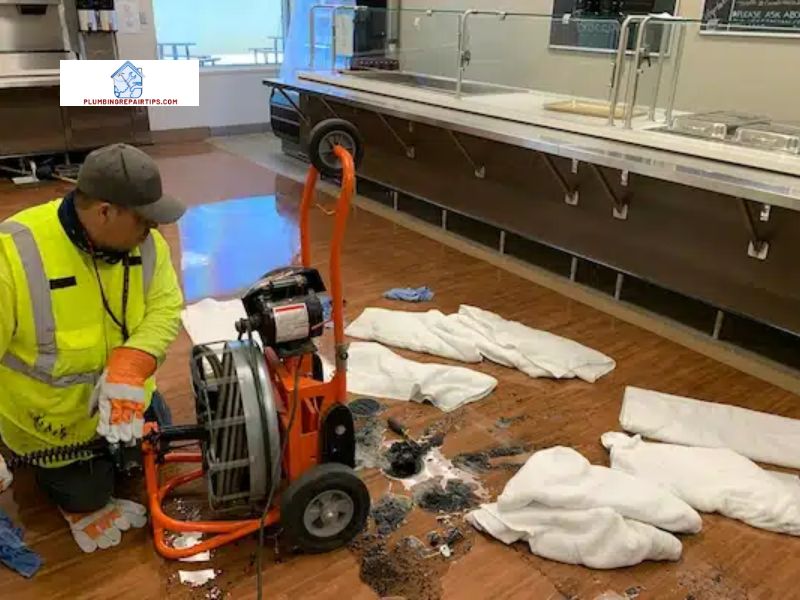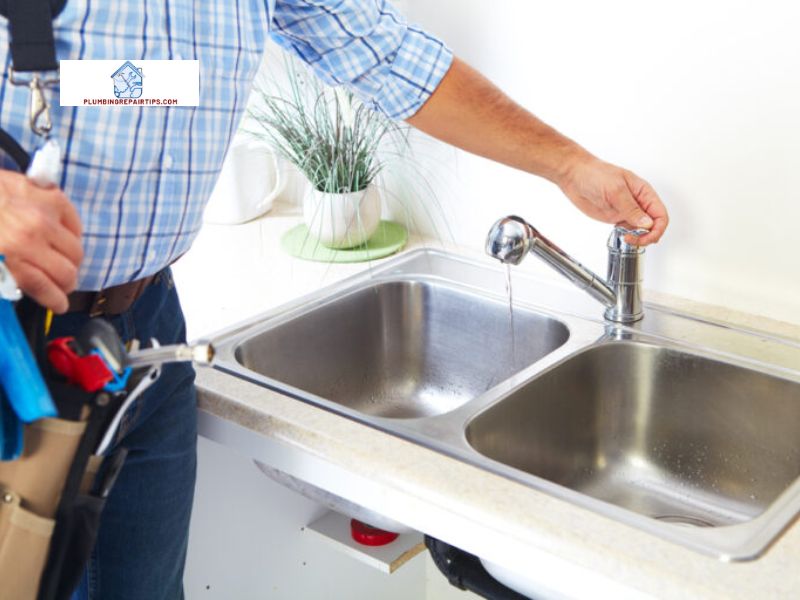Are you tired of dealing with a stubborn sink stopper that just won’t budge? Picture this: You’re standing at your sink, ready to do the dishes or wash your hands, and the water starts to fill up, leaving you in a state of frustration. It’s a common scenario that many homeowners encounter – a stuck sink stopper. But fear not! In this article, plumbingrepairtips.com will walk you through the ins and outs of this plumbing predicament and explain why taking immediate action is crucial.
A. Brief Explanation of a Stuck Sink Stopper
A sink stopper is a mechanism designed to control the flow of water down the drain. When it gets stuck, it disrupts the normal functioning of your sink, causing water to drain sluggishly or not at all. This can be caused by various factors, including accumulated debris, mineral build-up, or improper installation.
B. Importance of Addressing the Issue Promptly
You might be wondering, “Why should I bother addressing a stuck sink stopper right away?” Well, let me tell you this – neglecting this seemingly minor issue can lead to major headaches down the line. A clogged sink can result in foul odors, unsanitary conditions, and even potential damage to your plumbing system. By tackling the problem promptly, you can prevent these inconveniences and ensure the smooth operation of your sink.
Think about it – every time you use your sink, you want it to function flawlessly, right? You don’t want to be left with a sink full of standing water or a slow-draining basin. So, take action as soon as you notice signs of a stuck sink stopper to avoid any further complications.
In the following sections, we’ll delve deeper into the common causes, signs, and symptoms of a stuck sink stopper, along with practical solutions and preventive measures to keep your sink running smoothly. Stay tuned to learn more about how to bid farewell to this pesky problem once and for all!
Feeling frustrated with a stuck sink stopper that disrupts your daily routine? Don’t let it dampen your spirits! Discover the reasons behind this common plumbing woe and unlock the secrets to swift resolutions. Let’s dive in!
Common Causes of a Stuck Sink Stopper
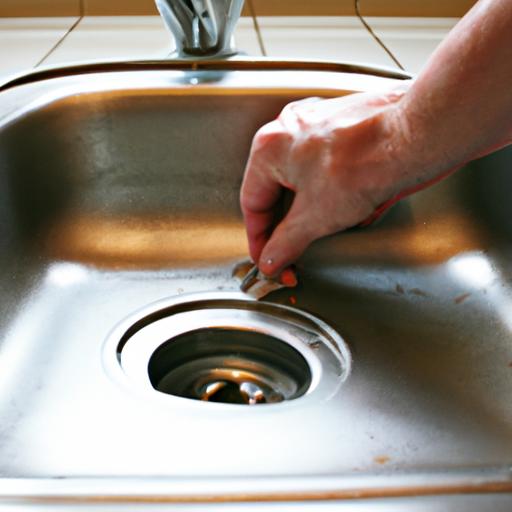
When it comes to a stuck sink stopper, several culprits can be to blame. Let’s explore the common causes behind this frustrating issue and gain a better understanding of what might be impeding the proper functioning of your sink stopper.
A. Accumulated Debris and Food Particles
One of the primary causes of a stuck sink stopper is the accumulation of debris and food particles. Over time, small particles, such as food scraps, grease, and soap residue, can find their way into the drain. These substances can build up and create a barrier, hindering the smooth movement of the sink stopper. If you often neglect to use a drain catcher or strainer, chances are you’re inviting trouble by allowing these materials to enter your drain.
B. Mineral Build-up or Corrosion
Mineral build-up and corrosion are another common cause of a stuck sink stopper, particularly in areas with hard water. Mineral deposits, such as calcium and lime, can accumulate on the stopper mechanism, making it difficult to move freely. Moreover, corrosion caused by constant exposure to water and chemicals can also contribute to the stickiness of the stopper. These factors can gradually impair the stopper’s ability to function properly and may require some extra effort to address.
C. Improper Installation or Poor Maintenance
Improper installation or poor maintenance practices can also lead to a stuck sink stopper. If the stopper was not installed correctly in the first place, it may not move as intended. Additionally, neglecting routine cleaning and maintenance can exacerbate the problem. Regularly cleaning and lubricating the stopper mechanism can help prevent it from getting stuck and ensure its smooth operation.
By understanding these common causes, you can take proactive steps to prevent your sink stopper from becoming stuck in the future. In the next section, we’ll delve into the signs and symptoms that indicate your sink stopper is in need of some attention. Stay tuned!
What’s stopping your sink stopper from gliding effortlessly? Let’s uncover the underlying causes to get to the root of this problem. From accumulated debris to mineral build-up, we’ll explore the reasons behind a stuck sink stopper and equip you with the knowledge to tackle it head-on.
Signs and Symptoms of a Stuck Sink Stopper
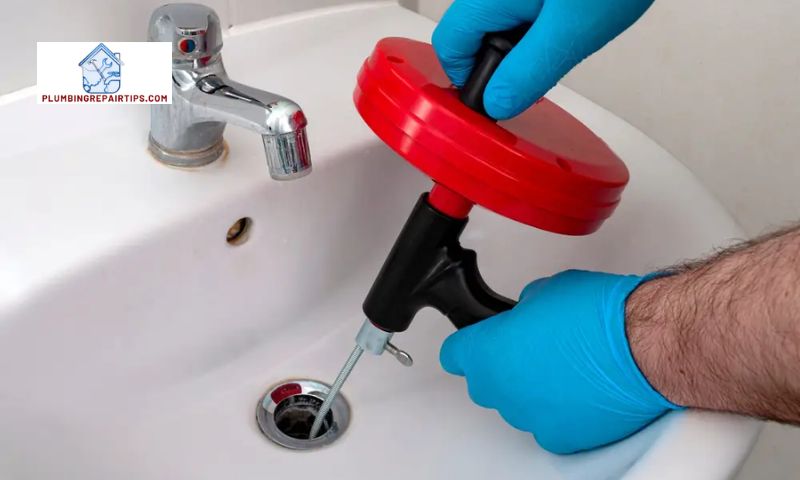
You might be wondering how to identify if your sink stopper is indeed stuck. Well, worry not! In this section, I’ll highlight some telltale signs and symptoms that indicate a stuck sink stopper, helping you diagnose the issue with ease.
A. Water Draining Slowly or Not at All
One of the most obvious signs of a stuck sink stopper is water draining slowly or, in some cases, not draining at all. You might notice that after washing dishes or simply running water, it takes an eternity for the sink to empty. This sluggish draining process is a clear indication that something is amiss with your sink stopper. Don’t ignore this red flag – it’s time to roll up your sleeves and address the issue head-on!
B. Unpleasant Odors Emanating from the Sink
Have you noticed a foul smell wafting from your sink? If so, a stuck sink stopper could be the culprit. Over time, debris and food particles can accumulate in the drain, leading to a buildup of bacteria and unpleasant odors. This can be particularly bothersome, as the smell can permeate your kitchen or bathroom, making the space less inviting. Don’t let these unwelcome scents linger – it’s time to take action and restore freshness to your sink!
C. Gurgling or Bubbling Noises When Water is Running
Another sign that your sink stopper is stuck is the presence of gurgling or bubbling noises when water is running. These unusual sounds indicate that there is a blockage in the drain, causing air to become trapped and escape in an audible manner. If you hear these sounds while using your sink, it’s a clear indication that your sink stopper needs your attention. Ignoring these noises could lead to further complications, so let’s tackle the issue before it worsens!
By keeping an eye out for these signs and symptoms, you can quickly identify if your sink stopper is stuck. Don’t let these inconveniences hinder your daily routine – in the next section, we’ll explore effective methods to remove that stubborn sink stopper and restore the smooth flow of water. Stay tuned!
Is your sink draining at a snail’s pace? Have you noticed unpleasant odors or strange noises emanating from your sink? These signs and symptoms are all pointing to a stuck sink stopper. Let’s unravel the mystery and find a solution together!
How to Remove a Stuck Sink Stopper
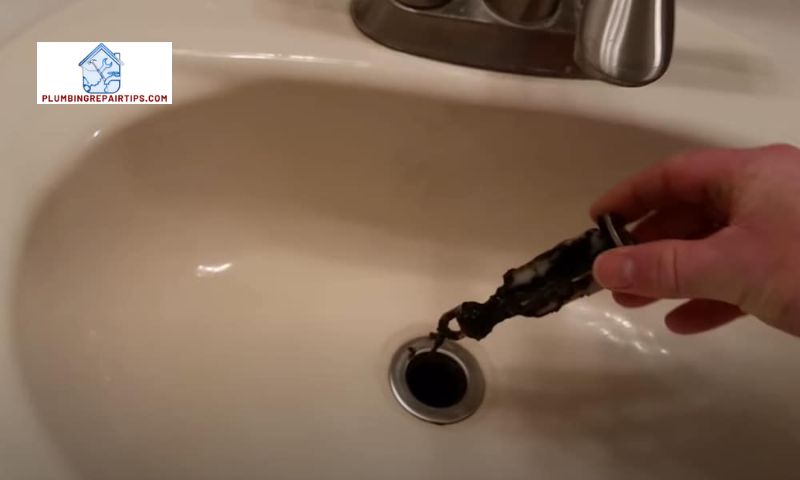
A. Step-by-Step Guide to Removing the Stopper
Removing a stuck sink stopper may seem daunting, but with a little know-how, you can tackle this task like a pro. Here’s a simple step-by-step guide to help you regain control over your sink’s drainage:
- Inspect the stopper: Take a close look at the stopper to determine its type. Is it a pop-up stopper or a twist-and-turn stopper? This will guide your removal method.
- Access the stopper: Locate the access point underneath the sink. You might find a rod or lever connected to the stopper mechanism. It’s time to roll up your sleeves and get down to business.
- Twist or lift: If you have a twist-and-turn stopper, gently twist it counterclockwise to unlock it. For a pop-up stopper, you might need to lift it up and rotate it until it disengages from the drain.
- Unscrew or disconnect: If there’s a rod or lever visible, unscrew it or disconnect it from the stopper. Keep in mind that different sinks may have varying mechanisms, so refer to the manufacturer’s instructions if available.
- Pull out the stopper: With the connections released, you can now pull the stopper out of the drain. Be careful not to damage any surrounding components or scratch the sink surface.
B. Tools and Materials Required for the Task
Before you embark on the journey of freeing your sink stopper, gather the necessary tools and materials to make the process smoother. Here’s what you’ll need:
- Pliers or adjustable wrench: These tools will help you with gripping and turning components if required.
- Screwdriver: Keep a Phillips or flathead screwdriver handy to assist with any screws or fasteners you may encounter.
- Rubber gloves: Protect your hands from any potential mess or sharp edges by wearing rubber gloves.
- Bucket or bowl: Place a bucket or bowl beneath the sink to catch any water or debris that may come out during the removal process.
C. Precautions to Take During the Process
As with any DIY task, safety should be a top priority. Here are a few precautions to consider when removing a stuck sink stopper:
- Turn off the water: Before you start, turn off the water supply to the sink by shutting off the water valves. This will prevent any accidental water flow during the removal process.
- Be gentle: Handle the stopper and surrounding components delicately to avoid causing damage. Avoid excessive force or twisting that may lead to breakage.
- Keep track of parts: As you disassemble the stopper mechanism, keep track of the parts you remove. This will make reinstallation easier later on.
By following these step-by-step instructions and taking necessary precautions, you’ll be well on your way to removing that stubborn sink stopper and restoring your sink’s functionality.
Ready to bid farewell to the stuck sink stopper? Fear not! With a clear plan and the right tools, we’ll navigate through the removal process together. Let’s get started!
Conclusion: Tackle Stuck Sink Stoppers with Confidence
Congratulations! You’ve now gained a wealth of knowledge on dealing with the pesky issue of a stuck sink stopper. Remember, when faced with this inconvenience, it’s essential to address it promptly to avoid further complications. By following the steps outlined in this article, you can bid farewell to slow-draining sinks and unpleasant odors.
In our exploration, we started by understanding the causes of a stuck sink stopper, including debris accumulation, mineral build-up, and installation errors. We then delved into the signs and symptoms that indicate a stuck sink stopper, such as slow or non-existent drainage and gurgling noises. Armed with this knowledge, you can now identify the problem early on and take action.
To remove a stuck sink stopper, we provided a step-by-step guide and highlighted the necessary tools and precautions. However, prevention is always better than cure. That’s why we discussed preventive measures to avoid a stuck sink stopper. Regular cleaning and maintenance, using drain catchers or strainers, and being mindful of what goes down the sink can significantly reduce the likelihood of encountering this issue in the future.
Remember, sometimes DIY methods may not be sufficient, and that’s when it’s wise to seek professional help. Complex cases or persistent issues may require the expertise of a skilled plumber. They possess the knowledge and tools to resolve the problem efficiently, ensuring your sink operates flawlessly.
So, the next time you find yourself struggling with a stuck sink stopper, don’t fret! You now have the confidence and know-how to tackle it head-on. Keep your sink running smoothly by implementing preventive measures and seeking professional assistance when needed.
For more expert plumbing tips and advice, visit plumbingrepairtips.com. Our dedicated team is here to assist you in maintaining a well-functioning plumbing system. Remember, a smoothly flowing sink is just a few steps away!
Don’t let a stuck sink stopper dampen your spirits! With the knowledge gained from this article, you’re equipped to prevent, resolve, and maintain a hassle-free sink. Remember to take action promptly, implement preventive measures, and seek professional help when necessary. Your sink will thank you for it!
